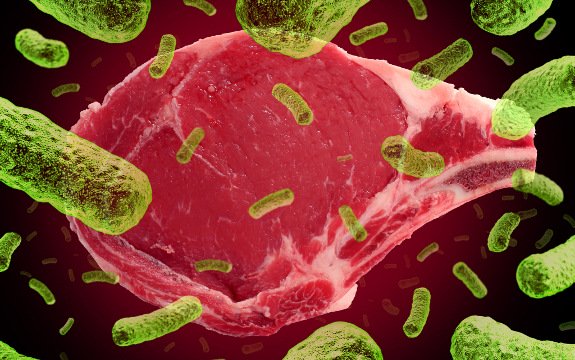4 Nasty Substances Found in Most U.S. Meat

 Everyone deserves to know what exactly makes up the food they’re eating. This includes the presence of additives, GMO ingredients, and drugs fed to livestock before slaughter. With this information, you can make the best possible decisions not only for your health, but for the health of your planet. So, let’s talk about what drugs may be in that meat you’re planning on cooking up for dinner.
Everyone deserves to know what exactly makes up the food they’re eating. This includes the presence of additives, GMO ingredients, and drugs fed to livestock before slaughter. With this information, you can make the best possible decisions not only for your health, but for the health of your planet. So, let’s talk about what drugs may be in that meat you’re planning on cooking up for dinner.
Livestock animals are fed a variety of drugs for a variety of reasons. Ideally, none would end up in the human food supply, but as AlterNet reports, the USDA frequently finds such drug residues in their testing and in some cases, allows it.
In a 2010 report (pdf) issued to the public, the USDA admitted to finding antibiotics, non-steroidal anti-inflammatories (NSAIDs), anti-parasitic drugs, and heavy metals in meat headed to the US food supply. It wasn’t stopped and wasn’t recalled.
So, what’s in your meat?
There is little doubt that your meat contains antibiotics (1), fed to livestock both to fight infection and to increase weight. While the FDA announced in December they would be “cracking down” on antibiotic-use in livestock, much of their crack-down is completely voluntary for large pharmaceutical companies, farmers, and the veterinarians that work with them.
According to the Natural Resources Defense Council, just one month after the FDA’s announcement, a study revealed that 26 out of 30 antibiotics approved by the FDA for use in livestock feed failed their own safety tests—but are still being used.
Read: 4 Harmful Things Hiding in Your Meat
There’s also a good chance your meat has some pesticides (2) inside. Testing for these contaminants in meat is lax. Of 23 known “high-risk” pesticides, the USDA’s Food Inspection and Safety Service (FSIS) only tests for one. So, depending on how your meat’s food was prepared (and it likely wasn’t organic and pesticide-free), it probably has pesticide residues in every bite.
Your meat likely contains residues from anti-parasitics (3). These are drugs administered to livestock to kill off things like liver flukes, stomach worms, eyeworms, intestinal worms, and whipworms—things you definitely don’t want in your meat. But the drugs used to annihilate them may not be all-good. They carry labels warning against skin contact, saying nothing for direct internal organ contact.
Hormones (4) are a widely-known feature in U.S. meat as well. The EU knows our meat is contaminated with hormones and want nothing to do with it. It’s believed these hormones could increase the risks of breast and prostate cancer, with research showing the highest concentrations of these cancers coinciding with the highest hormone-treated meat consumption.
There are drugs in your meat; it’s a fact. How those drugs affect human health is widely debated. It’s up to you, the consumer, to make use of the information available to you and make wise health decisions accordingly.

Thinking the unthinkable: Alzheimer’s, Creutzfeldt-Jakob and Mad Cow disease: the age-related reemergence of virulent, foodborne, bovine tuberculosis or losing your mind for the sake of a shake or burger.
http://www.ncbi.nlm.nih.gov/pubmed/15694685
I’m going on a water diet , oh but wait,
that’s contaminated as well